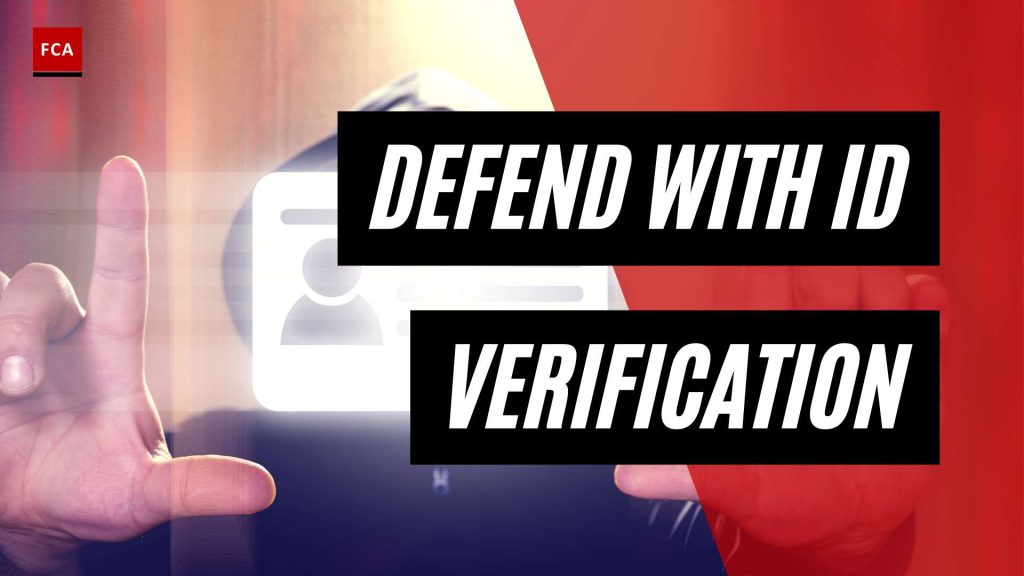Importance of Customer Identity Verification
Customer identity verification plays a crucial role in combating fraud and financial crime, while also ensuring compliance with regulations. Let’s explore these two key aspects in detail.
Preventing Fraud and Financial Crime
Implementing robust customer identity verification processes is essential to prevent fraud and financial crime. By verifying the identity of customers, organizations can establish trust and confidence in their transactions, mitigating the risk of fraudulent activities. Identity verification helps to:
- Confirm the authenticity of individuals or entities involved in financial transactions.
- Detect and prevent identity theft, account takeover, and impersonation attempts.
- Ensure that individuals are not using false identities or stolen information.
- Safeguard against money laundering, terrorist financing, and other illicit activities.
The importance of customer identity verification is evident in various industries and organizations. For example, Thomson Reuters highlights the significance of implementing identity verification in government unemployment agencies to prevent fraud, waste, and abuse. This demonstrates the wide-ranging application of identity verification in combating fraudulent activities.
Compliance with Regulations
Compliance with regulations is a critical aspect of customer identity verification. Organizations must adhere to Know Your Customer (KYC) regulations and other relevant guidelines to ensure transparency, mitigate risk, and maintain the integrity of the financial system.
Regulatory frameworks such as the European Union’s 6th Anti-Money Laundering Directive (6AMLD) and guidelines from the Financial Action Task Force (FATF) provide clear standards and expectations for customer identity verification practices. These regulations focus on:
- Enhancing due diligence requirements for identifying and verifying customers.
- Promoting the use of reliable and independent sources for identity verification.
- Encouraging the adoption of electronic verification methods to improve efficiency and accuracy.
Adhering to these regulations is crucial for financial institutions and other entities to protect themselves from legal and reputational risks. Non-compliance can result in severe penalties, fines, and damage to an institution’s reputation.
By prioritizing customer identity verification, organizations can defend against fraud and financial crime while meeting their regulatory obligations. The adoption of advanced technologies and methods for identity verification enables organizations to streamline their processes, enhance security, and maintain compliance with evolving regulations.
Technologies for Customer Identity Verification
In the realm of customer identity verification, various technologies play a crucial role in ensuring the integrity and security of the process. These technologies offer innovative ways to authenticate individuals and prevent fraud in the financial sector and other industries. Three notable technologies for customer identity verification are biometric verification, knowledge-based authentication, and two-factor authentication.
Biometric Verification
Biometric verification leverages unique physical or behavioral characteristics to confirm an individual’s identity. This technology includes modalities such as facial recognition, voice authentication, fingerprinting, iris scanning, and retina scanning. Biometrics provide enhanced security and convenience in the customer identity verification process. By offering features distinct from traditional methods like passwords and PINs, biometric technology significantly reduces the risk of unauthorized access and impersonation (Aware).
Benefits of biometric verification include:
- Enhanced security: Biometric characteristics are difficult to replicate, making it harder for fraudsters to gain unauthorized access to accounts or services.
- Convenience: Biometric authentication eliminates the need to remember and manage passwords or PINs, creating a streamlined and user-friendly experience.
- Accuracy: Biometric identifiers provide a high level of accuracy in verifying the identity of individuals, minimizing the risk of false positives or false negatives.
However, it is essential to consider potential risks and concerns associated with biometric verification, such as the risk of biometric data being stolen and potentially used for fraudulent purposes. Organizations implementing biometric solutions must prioritize data protection and adhere to strict security measures.
Knowledge-Based Authentication
Knowledge-based authentication (KBA) is a verification method that relies on information known only to the individual being verified. Typically, this involves answering security questions or providing specific personal details that only the genuine user should know. While KBA has been widely used in the past, it is susceptible to fraud and identity theft due to the increasing availability of personal information through data breaches and social engineering attacks (Aware).
Despite its limitations, KBA can still be used effectively as an additional layer of identity verification when combined with other methods. Organizations should carefully select security questions and consider using dynamic knowledge-based authentication that adapts to the user’s profile and history to enhance security.
Two-Factor Authentication
Two-factor authentication (2FA) is a widely adopted security measure that requires users to provide two different types of credentials to verify their identity. Typically, this involves combining something the user knows (e.g., a password or PIN) with something the user possesses (e.g., a token or mobile device). By adding an extra layer of authentication, 2FA provides a powerful deterrent against fraudulent activity.
The use of 2FA provides benefits such as:
- Stronger security: 2FA significantly reduces the risk of unauthorized access, as an attacker would need to possess both factors to bypass the authentication process.
- User-friendly: Despite the added security, 2FA methods can still be convenient for users, especially with the increasing prevalence of smartphones and mobile authentication apps.
However, it’s important to note that 2FA has its limitations. Users typically need to have their smartphones or authentication devices with them during the authentication process, which may not always be feasible. Organizations implementing 2FA should consider providing alternative authentication methods for users who may not have access to their primary device.
In the realm of customer identity verification, biometric verification, knowledge-based authentication, and two-factor authentication offer advanced solutions to enhance security and ensure the integrity of the process. Organizations should carefully evaluate these technologies based on their specific needs, regulatory requirements, and the level of convenience they offer to their customers.
Advantages and Limitations of Biometric Verification
Biometric verification, a technology that uses an individual’s unique physical or behavioral features like fingerprints, facial recognition, or voice authentication, offers several advantages in the customer identity verification process. However, it is essential to consider both the benefits and limitations of biometric verification.
Enhanced Security and Convenience
One of the key advantages of biometric verification is enhanced security. Biometric features are difficult to replicate, making it challenging for fraudsters to impersonate someone’s physical characteristics. Traditional methods like passwords, PINs, or security questions are susceptible to fraud and identity theft, highlighting the need for more secure identity verification solutions like biometrics (Aware). By using biometric technology, organizations can significantly reduce the risk of unauthorized access and impersonation, ensuring a higher level of security in the customer identity verification process (Aware).
Biometric verification also offers convenience to both customers and organizations. Compared to traditional methods, such as remembering passwords or answering security questions, biometrics provide a more user-friendly and seamless experience. Users can authenticate themselves in seconds by capturing their facial features, voice, or fingerprints, simplifying transactions and reducing wait times, especially in call centers (LinkedIn). The ease of use and efficiency of biometric verification contribute to a positive customer experience, as it eliminates the need for active user participation and streamlines the authentication process (LinkedIn).
Potential Risks and Concerns
While biometric verification offers numerous advantages, there are also potential risks and concerns associated with its implementation. One of the concerns is privacy. As biometric data involves capturing and storing an individual’s physical features, there is a need to ensure proper data protection and minimize the risk of data breaches, especially in industries dealing with sensitive customer information like banking and insurance (LinkedIn). Organizations must comply with privacy regulations and implement robust security measures to safeguard user privacy and prevent unauthorized access to biometric data.
Another consideration is the accuracy and reliability of biometric verification systems. While biometric technology has advanced significantly, there can still be instances of false positives or false negatives. Factors such as poor image quality, changes in physical appearance, or variations in environmental conditions can impact the accuracy of biometric matching. Organizations need to regularly assess and update their biometric systems to ensure reliability and minimize errors.
Additionally, there may be challenges in deploying biometric verification across different platforms or devices. Ensuring compatibility and integration with various systems can require additional resources and expertise. Organizations must carefully evaluate their infrastructure and select biometric verification solutions that align with their operational requirements.
Despite these limitations and concerns, the adoption of biometric technology in customer identity verification processes is increasing due to its effectiveness, security, and ease of use. Biometric verification is transforming the way organizations verify the identity of their customers securely and efficiently, enhancing security measures and aligning with the goal of Know Your Customer (KYC) regulations to prevent fraud and money laundering (Aware). With proper implementation and adherence to privacy guidelines, biometric verification can provide a robust and reliable method for customer identity verification across various industries.
Methods for Customer Identity Verification
When it comes to customer identity verification, several methods are commonly employed to ensure the authenticity and accuracy of customer information. These methods play a crucial role in preventing fraud, complying with Know Your Customer (KYC) regulations, and mitigating the risk of financial crime. Let’s explore three common methods used for customer identity verification: government-issued photo identification, credit file verification, and dual-process verification.
Government-Issued Photo Identification
The government-issued photo identification method involves verifying a person’s identity by examining an authentic, valid, and current identification document, such as a passport or driver’s license. This process typically requires an in-person interaction to ensure that the information provided by the person matches the details on their identification document. Government-issued photo identification is a widely accepted method to establish identity and is an integral part of the customer onboarding process.
Credit File Verification
Credit file verification is another method used to verify customer identity. It involves accessing a person’s credit file to confirm their identity. The credit file must be valid, current, and match the information provided by the individual. This method relies on the accuracy and reliability of credit bureau data to authenticate the customer’s identity. It is important for organizations to have appropriate consent and comply with relevant data protection regulations when accessing credit files for identity verification purposes.
Dual-Process Verification
The dual-process verification method requires using two different reliable sources to verify a person’s identity. This method adds an additional layer of security by cross-referencing information from multiple sources. The information obtained must be valid, current, and come from different sources. Various combinations of information sources can be used, such as government databases, utility bills, or financial statements. By relying on multiple sources, organizations can enhance the accuracy and reliability of customer identity verification.
It is important to note that these methods may vary depending on the regulatory framework and industry standards in different jurisdictions. Organizations need to ensure compliance with applicable regulations and AML (Anti-Money Laundering) guidelines when implementing customer identity verification processes.
By utilizing government-issued photo identification, credit file verification, and dual-process verification methods, organizations can establish robust customer identity verification processes. These methods help to ensure the accuracy of customer information, minimize the risk of fraud, and strengthen compliance with regulatory requirements. Additionally, advancements in digital identity verification technologies are further enhancing the speed, efficiency, and accuracy of identity verification processes, providing organizations with more comprehensive and reliable customer authentication solutions.
The Role of Automated Identity Verification
In the realm of customer identity verification, automated processes play a vital role, particularly when it comes to streamlining onboarding processes for businesses. By implementing automated identity verification solutions, companies can efficiently verify the identity of their customers, enhance security measures, and improve the overall customer experience. However, it’s important to recognize both the benefits and potential drawbacks of automated identity verification.
Streamlining Onboarding Processes
Automated identity verification significantly contributes to streamlining the customer onboarding process. When a customer creates a new account or applies for a new service, automated systems can verify their identity efficiently and effectively. This eliminates the need for extensive manual verification procedures that can be time-consuming and prone to errors. By automating these processes, businesses can expedite the onboarding process, allowing customers to access their desired products or services faster.
The use of automated identity verification can reduce friction and enhance the overall customer experience. Customers no longer need to submit physical documents or go through lengthy verification processes. Instead, they can provide their information electronically and have it securely verified in real-time. This streamlined approach not only saves time for both businesses and customers but also improves customer satisfaction and loyalty.
Benefits and Potential Drawbacks
Automated identity verification offers several benefits for businesses and customers alike. Firstly, it provides a seamless and intuitive experience, reducing the frustration and complexity often associated with manual verification processes. Customers appreciate the convenience of automated systems that can verify their identity quickly and securely. This, in turn, enhances customer trust in businesses that prioritize advanced security measures to protect personal information.
Furthermore, automation can lead to cost savings for businesses. By reducing the reliance on manual verification processes, companies can save on hiring and training staff solely dedicated to identity verification. These cost savings can be passed on to customers in the form of lower fees or prices.
However, it’s important to consider potential drawbacks when implementing automated identity verification. Inaccuracies can arise due to errors or outdated information in data sources, which may result in false positives or negatives. Initial setup costs for implementing automated systems should also be taken into account. Moreover, biases in data sources can lead to discrimination if not carefully monitored and addressed. Technical issues, such as software glitches or hardware failures, can also affect the effectiveness of automated identity verification.
Despite these potential drawbacks, the benefits of automated identity verification in terms of efficiency, security, and customer experience make it an increasingly valuable tool for businesses. By leveraging advanced technologies and robust AML compliance solutions, organizations can effectively verify customer identities while mitigating the risks associated with financial crime and fraud.
Regulatory Framework for Customer Identity Verification
In the fight against financial crime, robust customer identity verification processes play a critical role. Various regulatory frameworks have been established to ensure compliance and enhance the effectiveness of these measures. Two key frameworks to consider are the European Union’s 6th Anti-Money Laundering Directive (6AMLD) and the guidelines set forth by the Financial Action Task Force (FATF).
European Union’s 6th Anti-Money Laundering Directive
The European Union’s 6th Anti-Money Laundering Directive (6AMLD) introduces new regulations for electronic customer identification and verification (eID&V) to combat financial crime and improve transparency. These regulations focus on enhancing due diligence requirements for identifying and verifying customers in the digital environment, particularly for high-risk transactions and sectors such as cryptocurrency.
The 6AMLD emphasizes the importance of reliable and independent sources for verifying customer identities. It encourages the use of electronic verification methods and sets standards for customer verification processes. By implementing these regulations, financial institutions and businesses can strengthen their anti-money laundering (AML) efforts and ensure compliance with European Union directives.
Financial Action Task Force Guidelines
The Financial Action Task Force (FATF), an intergovernmental organization focused on combating money laundering and terrorist financing, plays a significant role in setting global standards for customer identity verification. In 2019, the FATF updated its guidelines to provide more clarity on how countries should implement customer identity verification measures as part of their AML and counter-terrorist financing efforts.
The FATF guidelines stress the importance of using reliable, independent sources for verifying customer identities. It promotes the use of electronic verification methods that leverage technology to streamline the identity verification process while ensuring accuracy and compliance. These guidelines are widely recognized and adopted by countries around the world, providing a framework for effective customer identity verification practices.
By adhering to the regulatory frameworks established by the European Union’s 6AMLD and the FATF guidelines, organizations can strengthen their customer identity verification processes and contribute to the global fight against financial crime. These frameworks provide clear guidelines and standards, helping businesses navigate the complex landscape of AML regulations and ensure the integrity of their customer onboarding processes.
For more information on customer identity verification and other essential aspects of AML compliance, explore our articles on customer identification program, know your customer regulations, and aml compliance solutions.
Biometrics in Customer Identity Verification
Biometric technology is revolutionizing the field of customer identity verification by enhancing security and efficiency in the process. Biometrics utilize unique physical or behavioral features of individuals, such as fingerprints, facial recognition, or voice authentication, to accurately and reliably identify them. This method offers distinct advantages over traditional methods like passwords and PINs, reducing the risk of unauthorized access and impersonation (Aware).
Enhancing Security and Efficiency
Biometrics play a crucial role in enhancing security during customer identity verification. By utilizing physical or behavioral characteristics that are difficult to replicate, biometric authentication significantly reduces the risk of fraud and identity theft. The uniqueness of these features ensures a higher level of accuracy and reliability compared to traditional methods. Biometrics also offer the advantage of being more user-friendly, requiring individuals to simply present their biometric data for identification purposes.
Moreover, biometric technology provides a seamless and efficient verification process. By capturing and analyzing biometric data, such as facial features or voice patterns, in real-time, organizations can authenticate customers within seconds. This streamlined approach not only saves time but also enhances the overall customer experience, particularly in industries dealing with sensitive customer information, such as banking and insurance (LinkedIn). Biometrics simplify the authentication process through passive liveness detection, eliminating the need for active user participation and strengthening two-factor authentication (2FA). This ensures a higher level of security and user convenience (LinkedIn).
Applications in Various Industries
The adoption of biometric technology in customer identity verification processes is not limited to a single industry. It spans across sectors such as finance, healthcare, travel, and retail, transforming the way organizations verify the identity of their customers securely and efficiently. In the finance industry, biometrics provide a robust layer of security for AML compliance solutions and help prevent fraudulent activities. Healthcare institutions utilize biometric verification to ensure accurate patient identification and protect sensitive medical records. In the travel sector, biometrics are increasingly used for airport security and border control, expediting the verification process. Retailers are also leveraging biometrics to enhance customer experience by enabling secure and seamless transactions (Aware).
The versatility and effectiveness of biometric technology make it a valuable tool for customer identity verification across various industries. As organizations strive to comply with know your customer regulations and strengthen their customer onboarding process, biometrics provide a reliable and efficient method for verifying customers’ identities, reducing the risk of fraud, and improving the overall customer experience. The widespread adoption of biometrics underscores its significance in the field of customer identity verification and its potential to reshape the way organizations establish trust with their customers.
Identity Verification Methods in Canada
In Canada, verifying the identity of individuals is an essential component of the anti-money laundering and anti-terrorist financing regime. It helps organizations understand and assess associated risks, ensuring compliance with regulations and mitigating financial crime. There are several accepted methods for identity verification, including the government-issued photo identification method, credit file method, and dual-process method.
Government-Issued Photo Identification Method
The government-issued photo identification method involves physically examining an authentic, valid, and current identification document in person to confirm that the information matches what has been provided by the individual being identified. This method is commonly used to verify identity and is a reliable way to authenticate individuals.
Credit File Method
The credit file method relies on information from an individual’s credit file to verify their identity. This method requires access to a valid and current credit file that matches the information provided by the individual. By referring to the credit file, organizations can confirm the accuracy of the identity details and assess the risk associated with the individual.
Dual-Process Method
The dual-process method requires the use of two different reliable sources to verify a person’s identity. The information obtained from these sources must be valid, current, and come from distinct sources. This method allows for flexibility in identity verification and accepts various combinations of information sources. By cross-referencing different sources, organizations can enhance the reliability of identity verification processes.
Using these identity verification methods, organizations in Canada can establish the authenticity and accuracy of individuals’ identities, enabling them to fulfill their customer identification program obligations and comply with know your customer regulations. These methods play a critical role in mitigating financial crime risks and ensuring a robust AML compliance framework.
It’s important for organizations to have a comprehensive customer onboarding process that includes the proper KYC documentation requirements and identity verification methods. By implementing appropriate identity verification measures, organizations can bolster their defenses against fraud, money laundering, and other financial crimes.
Digital Identity Verification
In the digital age, digital identity verification plays a crucial role in ensuring secure and reliable customer onboarding processes. Automated authentication methods have become increasingly important for businesses, particularly in the financial sector, as they provide accurate and efficient verification while reducing the risk of fraud and identity theft.
Automated Authentication Methods
Automated identity verification utilizes various authentication methods to establish the identity of customers. These methods leverage advanced technologies such as biometric authentication, knowledge-based authentication, behavioral biometrics, and document verification.
Biometric Authentication: Biometric authentication relies on unique physical or behavioral features of an individual, such as facial recognition, voice biometrics, fingerprints, or signatures, to accurately and reliably identify them. This method enhances security, customization, and efficiency in customer processes (LinkedIn). By using biometric data, businesses can simplify transactions, reduce wait times, and strengthen two-factor authentication (2FA) for enhanced security (LinkedIn).
Knowledge-Based Authentication: Knowledge-based authentication involves verifying the customer’s identity by asking them specific questions based on personal information that only they should know. This method helps to establish the authenticity of the individual by confirming details related to their personal history or account activities.
Behavioral Biometrics: Behavioral biometrics analyze patterns in an individual’s behavior, such as typing speed, mouse movements, or touchscreen gestures, to verify their identity. By establishing unique behavioral patterns, this method enhances security and can detect anomalies that may indicate fraudulent activity.
Document Verification: Document verification involves scanning and analyzing identity documents, such as passports or driver’s licenses, to confirm their authenticity. Advanced technology is used to detect forged or tampered documents, ensuring that the submitted identification is valid and reliable.
These automated authentication methods provide businesses with accurate and efficient means of verifying customer identities, streamlining the onboarding process, and enhancing the overall customer experience.
Importance in the Financial Sector
In the financial sector, digital identity verification is of paramount importance. Financial institutions, including banks, insurance companies, and fintech startups, deal with sensitive customer information and must comply with know your customer (KYC) regulations and customer identification program (CIP) requirements. Automated identity verification helps them meet these regulatory obligations while ensuring the security and privacy of customer data.
Digital identity verification not only enhances security but also improves the efficiency of customer onboarding and ongoing due diligence processes. By automating identity verification, financial institutions can reduce costs associated with manual verification methods, such as hiring and training staff. This cost-saving potential can benefit both the institution and the customers.
However, it is important to note that while automated identity verification provides numerous benefits, there are potential drawbacks to consider. These include potential inaccuracies due to errors or outdated information in data sources, biases in data sources leading to discrimination, and technical issues such as software glitches or hardware failures (RevPartners). Therefore, businesses must choose reliable and reputable identity verification solutions and regularly monitor and update their systems to ensure effectiveness and compliance.
In conclusion, digital identity verification using automated authentication methods is a critical component of customer onboarding processes, especially in the financial sector. By leveraging advanced technologies, businesses can establish the identities of their customers accurately and efficiently, while meeting regulatory requirements and enhancing security measures.









